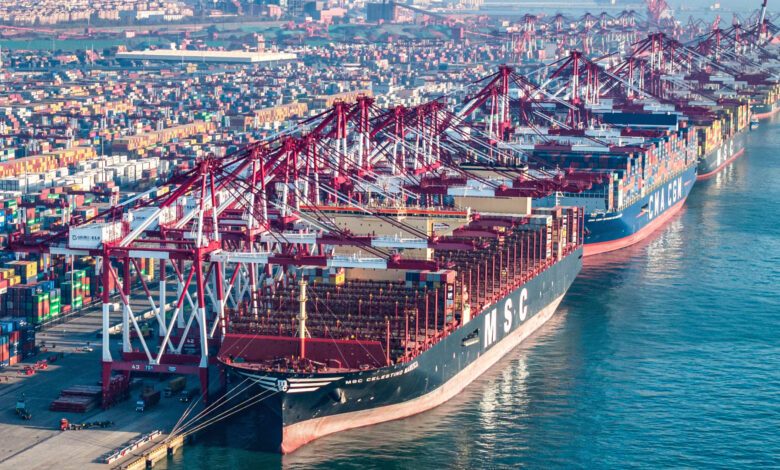Global trade outlook for 2025 has ‘deteriorated sharply,’ WTO warns

The global trade outlook has taken a sharp downturn following the implementation of President Donald Trump’s tariffs, according to a recent report from the World Trade Organization. The report highlights the negative impact of the tariffs and trade policy uncertainty on world merchandise trade, with a projected decline of 0.2% in 2025.
The report also warns of severe downside risks, including the potential application of reciprocal tariffs and a broader spillover of policy uncertainty, which could lead to an even sharper decline of 1.5% in global goods trade. North America is expected to be particularly hard hit, with exports forecasted to drop by 12.6% this year.
The recent disruptions in trade follow a strong year in 2024, with merchandise trade growing by 2.9% and commercial services trade expanding by 6.8%. The new estimate of a 0.2% decline in world trade for 2025 is significantly lower than expected, marking a stark reversal from earlier projections of continued trade expansion.
President Trump’s announcement of reciprocal tariffs on imports from over 180 countries in early April caused widespread market turbulence. However, a recent temporary reduction of duties to 10% for 90 days has provided a window for trade negotiations with trading partners.
The impact of these trade policy changes is expected to vary by region, with North America now subtracting 1.7 percentage points from global merchandise trade growth in 2025. Asia and Europe are still projected to contribute positively, albeit less than in the baseline scenario.
The disruption in U.S.-China trade is expected to lead to significant trade diversion, with Chinese merchandise exports projected to rise in regions outside North America. This could create new export opportunities for other suppliers, including some least-developed countries.
The WTO emphasizes the importance of managing these effects in a cooperative manner, as trade diversion is a two-way street that affects various regions and industries. It will be crucial for countries to navigate these challenges and find new markets for their products in order to mitigate the impact of the tariffs on global trade.





